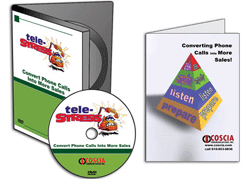'New' Aeroseal Offers Entry into Market

The Gen2 Aeroseal system is composed of a control case, fan
box assembly, control box assembly, and sealant injection wand. The contractor
injects sealant directly into the ductwork, sealing leaks from the inside.
The program, aimed at meeting the growing nationwide demand for duct-sealing services, aims to give new dealers what they need to become successful service providers in the home energy conservation market. The company wants ductwork to go from getting no respect, as Rodney Dangerfield used to say; to being a relative A-lister in the energy conservation market.
Mark Modera, an inventor of the technology and founder of Aeroseal Inc., initially sold his West Coast company to Carrier Corp. in 2001. He bought the company back last September, and partnered with startup company JMD. He is a board member and scientific advisor in the new Aeroseal.
The system is composed of a control case, fan box assembly, control box assembly, and sealant injection wand. The contractor injects sealant directly into the ductwork, sealing leaks from the inside.
MARKET GROWTH
The company is now aiming at the commercial duct-sealing market, as well as the residential.“Consumer awareness of the whole-home market is growing,” said Neal Walsh, vice president of sales and marketing. The company’s dealer-contractors are finding opportunities to partner with home energy inspectors, he said. “These professionals have shied away from informing consumers about duct leakage because there were no contractors to do the work,” he said.
On the commercial side, there is now more recognition of the value of duct sealing in multifamily and commercial buildings, said Modera, as well as in the hospitality market. “Bathroom vents in general don’t work very well for central exhaust systems in multistory buildings.” He said contractors can apply pressure-dependent grilles (from American Aldes) to solve the problem after the duct is sealed. However, “It needs a fairly tight duct system.” These self-balancing devices automatically regulate grille airflows to constant levels.
Other applications have in- cluded large laboratory buildings, hospitals, and a number of Navy bases.
Do new buildings have leaks? “I’ve seen as much leakage there as on existing buildings,” he said. “The standard of care has been relatively good on high-pressure portions of the supply side; downstream it goes way down. Leakage levels are often bad from day one.” A major benefit, he said, is that the Aeroseal system can seal leakage both upstream and downstream of the VAV boxes. “A lot of people test leakage upstream, but there’s a lot of leakage downstream that hasn’t been addressed.”
Duct leakage on the low-pressure side of the VAV boxes is often 10-20 percent, Modera said. “At 15 percent leakage, you use almost 50 percent more fan power.”
“We had quite a few contractors doing new construction in the residential sector,” he said. “Rectangular metal ductwork tends to leak from day one. Typical leakage in an existing house is 20-30 percent on either side of the house.” Leakage rates tend to be better in markets with a duct tightness code, “but in places where they don’t have codes,” he said, “new homes aren’t much better than existing.”
In the Sunbelt, it’s more about energy lost through the attic or crawlspace, he said. In a house with a heat pump, duct loss reductions can mean the system spends less time in strip heat mode. Ground-source heat pump installation costs also can be affected by duct sealing, he said, because it can reduce the size of the required ground loop.
CONTRACTOR TRAINING
“Training is absolutely mandatory” for new dealers, Walsh said. During a three-day intensive course, the first day is spent in the contractor’s shop; then there is training at a jobsite (usually an employee’s home), with the company demonstrating the system; and on the third day, the contractor’s employees perform duct sealing under the trainer’s supervision.According to Walsh, “Ducts are the Rodney Dangerfields of our homes; they get no respect.” Once customers are educated, though, “they are very receptive.” Therefore, training also includes how to educate customers. Ongoing contractor support includes monthly phone calls and visits (frequency based on each contractor’s needs), plus customized training, service, marketing, and business support.
According to Modera (who mentors the company’s technical staff), improvements have been made to the equipment itself. Gen-2, the latest version, “is in some ways a complete redesign of the injection process,” he said. “Now it’s five to 10 times faster.”
Actual sealing times with residential rectangular sheet metal duct, he said, were 120-150 minutes for Gen-1 equipment; for flex duct, 60-90 minutes. “It’s been reduced by a factor of five. The sealing rate went from 200 to 1,000 cfm/hour for one contractor, on the same rectangular sheet metal duct systems, using the same crews.” The average sealing time for rectangular metal duct is now closer to 30 minutes, and even less for flex-duct systems.
AWARENESS
There is more consumer awareness in general about the effect duct losses have on overall efficiency - but there are still things a contractor needs to teach them.For instance, “You’ll lose roughly half of the savings from a SEER increase associated with a two-speed compressor, when you put it on a crappy duct system,” Modera said. Also, “Just because it leaks in the basement, that doesn’t make it OK.” Not only does it leak more, there’s no insulation. Instead of installing a second system for the upper floor, Modera said, they can seal the ducts to provide more air at better temperatures to those rooms furthest from the furnace.
The company said it is signing up dealers on a regional basis, limiting the number of licenses to “maximize the success of each licensed service provider.” The number of regions will depend on population densities, Walsh said. “We are … dedicated to the success of our partnering service providers.”
For more information, call 877-349-3828 or visit www.aeroseal.com; for info on the pressure-dependent grilles, visit www.americanaldes.com.
Publication Date: 05/23/2011







